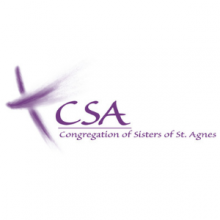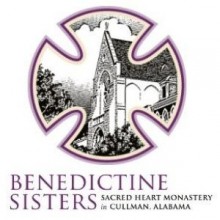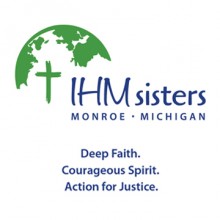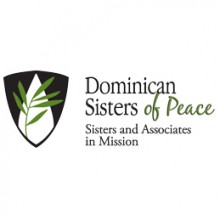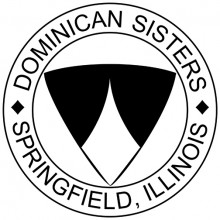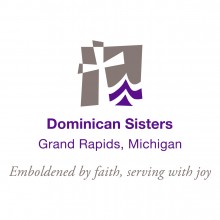Check out the November 20, 2006, issue of TIME magazine. The article “Today’s Nun Has A Veil—And A Blog” looks at the phenomenon of young women entering convents today and how they are changing “the sisterhood.” I like the diversity of religious life that this article illustrates. There are so many ways to live religious life. Each community has its own charism and unique lifestyle. I am also pleased that more and more religious are getting “wired” … that is hooked up to the Internet, blogs, podcasts, and a variety of technologies to spread the Good News and to tell people about who they are and what they stand for.
In the article, there is a somewhat odd commentary on the wearing of the habit in relation to living the “radical” dimension of religious life. The authors of the article say that the radicalism of living the vows of poverty, chastity, and obedience in today’s world “is, ironically, embodied by the wearing of the veil.” A quote from Cheryl Reed, author of Unveiled: Inside the Hidden Lives of Nuns, further suggests that women feel like they have given up so much to become a religious that they want to wear the veil and/or habit to show that they are special. While the wearing or not wearing of the veil and traditional habit is certainly a consideration when one enters religious life, I’m not sure that it is the “embodiment” of the radical dimension of religious life.
You don’t have to be around a religious community for long before you realize that the lifestyle is radical — not sleeping around is radical in today’s culture; not living for money and possessions, that’s radical too; and obedience? well who in their right mind is going to go for that? — yes, religious life is radical in and of itself without any need of relying on “accessories”. If we cling to a veil or a habit as the thing that defines us first and foremost as radical, then we are doing religious life, the Church and the world a disservice. If on the other hand, we cling to God and the particular mission he has for us — with or without veils — then we will be truly radical and faithful to our call as religious.
Archived Comments
- November 14, 2006 at 9:09 pm
-
“If on the other hand, we cling to God and the particular mission he has for us — with or without veils — then we will be truly radical and faithful to our call as religious.”
And that describes most of the sisters and nuns I know…I know Benedictines who wear full habits, and ones who don’t. I’d be hard pressed to try to say who’s more “embodied” of their vocation. I think the line in the Rule of St. Benedict is that monastics wear clothes which are suitable to the climate that don’t discriminate them from the poor.
- November 14, 2006 at 9:24 pm
-
I am a Benedictine Scholastic sister and have a blog also. I think the lectio and journaling are good spiritual disciplines and a way also to evangelize and share the faith
- November 15, 2006 at 12:44 am
-
I thought their emphasis on the “veil” was a little strange too. Maybe not entirely wrong, because I have heard from several sources that the majority of young women do for some odd reason have an attraction to communities with the habit, but the way they phrased everything was a little off base. I don’t know what it is about the habit that draws me in, but I’ve had several people tell me that it’s normal and different people will be attracted to different things according to their vocation.
- November 15, 2006 at 6:45 am
-
Well said, CC. God uses all of our attractions to help us along the way in responding to his call — including what the habit is (nuns that do not wear a traditional habit are still technically wearing a habit, just defined differently), where the community is located, how many people are members, etc. Young women have many choices in terms of how they want to respond to their call to religious life. The diversity of religious communities is a great gift to the church and world.
- November 15, 2006 at 12:11 pm
-
The article in the Time magazine led me to your blog. I liked the article because it reminded me of the Austrian nuns who ran our elementary school in Guyana, South America. I had such fond memories of Sister Koska who taught ballet. She’d being wearing her veil and habit with barefeet. BTW, I’ve returned to the church after over 20 years. My kiddies are in class for baptism and first communion. It’s like coming home.
- November 15, 2006 at 12:54 pm
-
Thanks for the comment, Michelle. Glad you have found your home.
- November 15, 2006 at 7:10 pm
-
Nice quote! And good post here. I’ve commented on the veil focus on my blog as well.
- November 15, 2006 at 8:38 pm
-
Hasn’t anyone heard of the document, “Essential Elements of the Religious Life”? It simply restates what has been the immemorial tradition in the Church regarding what is essential for religious life. It defines authentic religious life. “They wear a religious garb that distinguishes them as consecrated persons” The habit is an essential element of religious life. That has been the practice of the Church since the beginning. Read the Rule of Benedict. There are other elements which are essential- communtiy prayer, living in community, to name a couple.
- November 15, 2006 at 8:50 pm
-
Mary Margaret, thanks for pointing out the Vatican’s document on religious life. It’s good for us to keep that in mind. However, one of the central documents on religious life which was promulgated via an ecumenical council is Perfectae Caritas “Decree on the Adaptation and Renewal of Religious Life” (Pope Paul VI, 1965).
In this document, religious are called to take a religious habit: “The religious habit, an outward mark of consecration to God, should be simple and modest, poor and at the same becoming. In addition it must meet the requirements of health and be suited to the circumstances of time and place and to the needs of the ministry involved. The habits of both men and women religious which do not conform to these norms must be changed.” (a. 17) All religious congregations today adhere to this, as well as to the codes in Canon Law. How we define our habits (and we all have habits) is included in our Rule of life which is approved by the Vatican. So to suggest that not wearing a traditional habit is not living authentic religious life is to contradict what the Vatican itself has approved.
- November 16, 2006 at 12:34 am
-
I’m not a believer, so I feel out of place leaving a reply to your blog, but I felt compelled to do so. I came across the TIME article just as Michelle did, by accident. This article and this blog have given me an interesting insight to the life of a nun. Until now, the only information about nuns has come from The Sound of Music and Sister Act. I feel like your message will be better and more accurately spread through new technology. I support all beliefs, but have not yet found one for myself. I thank you for what you do, all of you.
- November 16, 2006 at 1:00 am
-
Colt, thank you for your comment … I welcome comments from everyone. Each of us has a slightly different perspective and we learn from one another.
- November 16, 2006 at 1:05 am
-
Good thoughts. I’m glad you were included in the Time article. I don’t lean one way or another of wearing a veil or not. I do think it is a visible sign of God; but I also think it sets people apart as the comment of people looking at the sister in the article funny shows. The habit made sense a long time ago historically… maybe that would be a good blog article! Today the habit might not make sense for our current time. I think our call to be a Christian means we shouldn’t be sleeping around and we should be living simply (we should live simply so others in our world can have something). Those aren’t the special call of the nun. That is the call for all Christians.
I question what makes being a sister or a nun a unique call. Everything a sister can do, a lay person can do that I am aware of. I do question what makes it a unique call in comparison to marriage being a unique call or single life being a unique call. Many sisters I know in apostolic communities especially tend to be living in apartments by themselves. I am trying to see if I can find enough of a sustaining community outside of religious life. I’m not sure finding it inside of religious life is realistic with diminishing numbers, few young people who will be left soon, the distances sisters live from each other so they can do ministry, and sisters desires to live in apartments to name a few.
I wonder if Vatican II is really calling lay people to take a role in the church and these distinctions be gotten away from. Is it more realistic to try to establish communities in our church and put our energy there? I’m not sure. I struggle with religious life verses “lay” living outside an order (I put lay in quotes because I realize sisters are lay but I wanted to distinguish).
- November 16, 2006 at 7:00 pm
-
Time’s article led me here. Looking forward to reading more about a Nun’s life.
- November 19, 2006 at 11:56 pm
-
Like others who have commented here and elsewhere on your blog, Julie, I am pleased for those communities which are happily receiving multiple women into their communities. And since the entire formation process takes upwards of seven or more years, there is much time to learn and grow as an individual while continuing to discern the “fit” of that call to that community.
I know of a number of male communities which have had numerous new members enter in recent years… many of whom discerned that the way of life was not as they imagined it would be and soon left or were asked to leave. Most religious communities in the US in the 40s, 50s and early 60s experienced an historically unprecedented increase in numbers. Many build those large structures to house the influx only to find themselves years later wondering what to do with the oversize structures when the numbers “settled down.”
It will be an interesting time we have in heaven (God willing) when we are finally able to see clearly what we only see darkly here.
- December 20, 2006 at 7:31 am
-
Have enjoyed reading the various comments here. I for one, as a layman, believe that religious should wear habits. I do not mean secular clothing with a little cross pinned to the lapel. Rather, something identifiable (however modified) with the religious garb that has gone before.
The modern view on habits is mixed. I spent years with the Benedictines years ago, once wore my habit to Mass at my home parish church when visiting, and was told by a priest that “This just isn’t done!” (male religious wearing habits on the street)
Have seen nuns in secular dress with tiny veils perched on bouffant hairdo’s (odd, considering that veils are worn to cover the hair) and many other habit-related oddities over the years. Interestingly, nuns who wear traditional habits (in my experience) seem to have no problem interacting with those layfolk whom they serve and work with. And yet many orders dumped the habit because it “interfered” with this interaction. The habit makes a statement, serves as a visible “witness”, unifies communities in a tangible way, and attracts people to it.
I remember priests back in the 60′s and 70′s, removing their collars when speaking to youth groups and saying things like, “Don’t call me Father Bill, call me Bill”. We liked friendly priests (and nuns) of course, but didn’t want them AS friends, in a chummy, “equal” sort of way. We wanted – needed – to have the option to relate to them AS priests and nuns. Habits, in some way, can facilitate this. They define, demarcate, and provide a sense of continuity in a Church that has gone through so much change, good and bad.
- December 20, 2006 at 8:04 am
-
Thanks for your comment, Hans. You are right … the modern view on habits is quite mixed.
- January 3, 2007 at 4:38 pm
-
Just before dying, my father received the last rites twice. The chaplain at the hospital in Montreal, used to wear jeans and street clothes…..just to fit in. My brother who is not religious nor cares about habits, told me that he had seen “some guy” making signs over my dying father. I asked my brother if the person was a priest. My brother replied that the man was not a priest as he was not dressed like one. I concluded that my father had not received the sacraments. I called a priest (one who looks and behaves like one) to give my father the last rites. That made me feel better and I am sure my father felt better as well upon seeing a priest administering to him. It was only after a while, that I found out that my father had received the last rites from the priest in jeans when a patient addressed this man in jeans as Father. I then asked him if he had given my dad the last rites and he confirmed it. Guess where I stand as to whether priests and nuns should be recognizeable?

